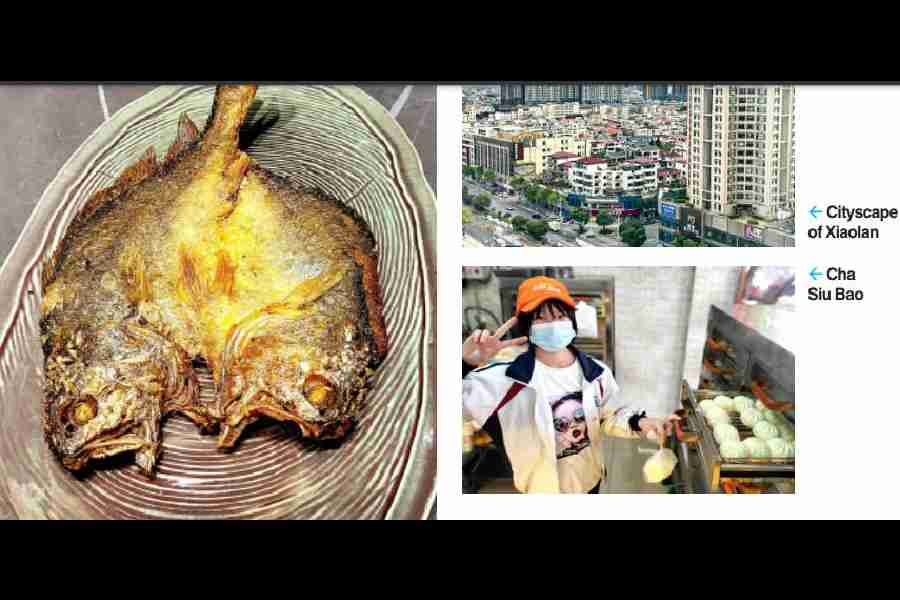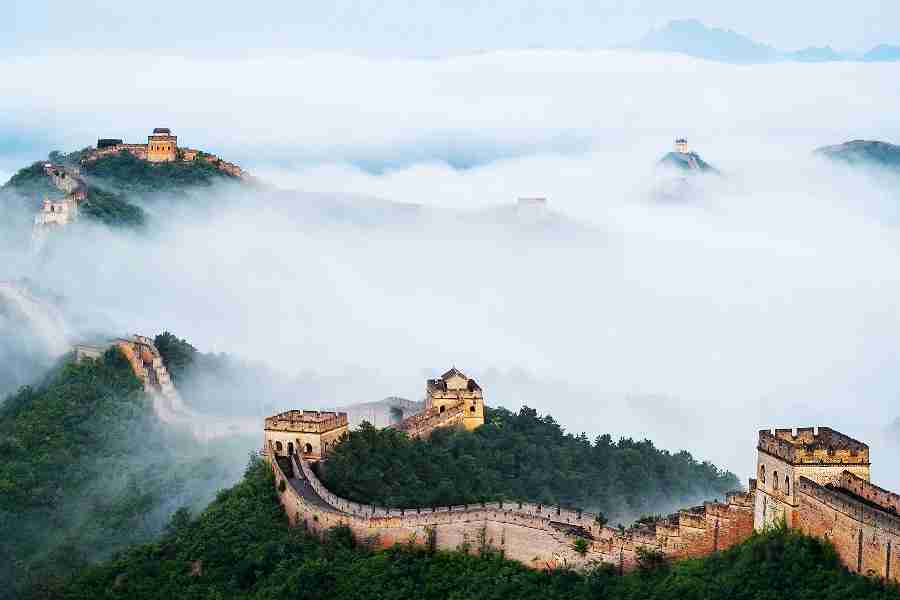It is not often that one plans a trip to China. The ancient artisans and the art of preserving history are at variance with skyscrapers of this country; China is not just a destination, it is a place of contrasts. On one side are lush green tropical trees while on the other is a bustling, modern civilisation.
As a globetrotter, I have set foot in more than 40 countries but China has always been close to my heart because of my musical tours. During the infancy of my restaurant chain Chowman, I used to visit the country two or three times a year to incorporate sauces, crockery-cutlery and decor into the Chowman model. But with the pandemic, my visits to China stopped. It was heartbreaking for me.
This year, the moment I heard that the restrictions were being lifted, I bought my ticket, did some lightning-quick packing, got my backpack and started the journey. I was one of the first tourists travelling to China from Calcutta post-pandemic. Of course, I was ready to visit my dream destination again, but I wasn’t ready for China post-pandemic.
For obvious reasons, there were no direct flights to China and I had to take hopping flights. I boarded a flight to Bangkok, followed by another to Hong Kong. My entrance to China was with a three-hour ferry trip to Zhongshan across the Yangtze river. Adjacent to the Guangzhou region of China, this city, which I remembered to be swarming with crowds, seemed deserted. I took a cab and started for one of the popular business hubs of China at Guangzhou, where one could simply stand for hours in awe of the architectural magnificence of office buildings. For those who have travelled here, the names “Baima” and “Beijing Lu” are not unfamiliar. While Baima is popular all over the country and beyond as a daytime destination for shopping, Beijing Lu is the perfect spot for a buzzing nightlife. But this time, things were a bit different. The crowd was comparatively less dense, although spirits were high. The malls were unusually empty, but this did not deter shopaholics like me.
My next destination was an industrial town in southern China called Xiaolan. I know every nook and cranny of Xiaolan not just because I visit my friend there every year (who has a factory in Xiaolan) but also because this town has one of the largest food markets known to me. Like every time, I started in the morning and visited the fish market. An abode of a wide range of exotic Chinese fish, the market was less crowded than I remember from my earlier visits to Xiaolan. My eyes were drawn to the heaps of strange vegetables, exotic meats of frogs, pigeons and so on, to the commonly known varieties of carp, triggerfish, porcupine fish, belt fish and other seafood like sea cucumber, mudskipper, slipper lobster and much more. I have always tried to be open with trying different dishes which others might be sceptical towards. As before, I did not hesitate to sample some frog meat or abalone.
My stay in Guangzhou came to an end on a great note with an additional joy along with the exquisite food — pigeon, frog, pork and other Chinese dishes. Bonny, my friend, took me out to try some vegetarian dishes and to my surprise, they were far above my expectations. Everyone knows me as someone who is a hardcore non-vegetarian. But some of the dishes I tried captured my heart, like the subtle
blend of spice in steamed cucumber in chilli oil, a perfectly-made cauliflower in pepper garlic or a simple preparation of stir-fried eggplant.
Tea ceremony and tender Peking Duck
I was accompanied by my friend Bonny Hoo on the next day to a place which has a long line of wine shops. Many people are aware of the unique meat and seafood that dominate Chinese food culture, but few know about the local wine called Shé-Jiǔor, which simply means snake wine. As the name suggests, the wine is made by inserting a live snake into rice wine which slowly ferments over a span of three months or more. Although I do not consume alcohol, I saw people making a beeline for it because of its medicinal value.
This travelogue would be incomplete if I did not mention Chinese tea. In China, tea is not only a beverage but an important part of social and cultural events. The art and culture of enjoying Chinese tea is a fascinating and intricate part of China’s rich heritage. I was much taken with the tea ceremony at my friend’s place.
My next and last stop was Beijing. This was certainly not the first time I was visiting Beijing, but it never fails to leave me in awe of the bustling city life. While one part is home to the ancient Great Wall, there lie on the other, neon billboards and sparkling lights. I have visited the Great Wall a few times before and although the Wall is one among the rare beauties of the world, I did miss the lively queues one usually sees at the entrance, in this post-pandemic scene.
I went there with the intent of experiencing some well-known dishes, digging my fork into tender Peking Duck, and trying out quintessential hot pot meals. I sampled some delicious dim sums, among which the Pork Cha Siu Bao was amazing. I also tried some glass noodles and steamed fish noodle soup. An evening walk down Qianmen Street was rejuvenating after my hectic itinerary and marked the end of my China trip this year.
Debaditya Chaudhury is founder and managing director of the Chowman chain of restaurants and is also co-owner of the brands, Oudh 1590 and Chapter 2. The foodie’s other passion is music and he is a founding member of Bangla rock band Lakkhichhara

Fish fry

The Great Wall of China Picture: iStock
